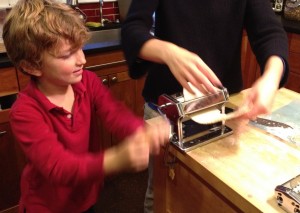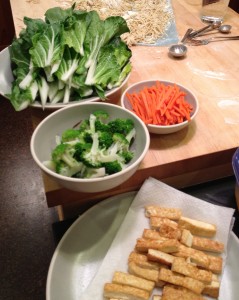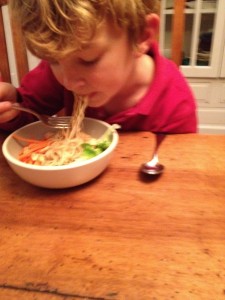by Caroline
At some point this summer, I picked up the inaugural issue of David Chang’s new food magazine, Lucky Peach, and then, overwhelmed by work on this book, I let it drop to the bottom of my reading pile. Because this is not the kind of food magazine you flip through, tearing out recipes, and then toss in the recycling; it’s a reading magazine, and I was doing enough reading about food — in the amazing essays by our contributors — that I really couldn’t handle any more.
But this weekend (having submitted the manuscript; hurray!), I pulled it out and read it. I read the journal of David Chang and Peter Meehan’s trip to Japan, I read the story about the New Yorker, Ivan Orkin, who’s opened a ramen shop in Tokyo, I read about the invention of instant ramen and I studied the map of regional ramens. I read Ruth Reichl’s instant ramen taste test (she spent $80 on ramen noodles, so you know it’s thorough) and laughed at the recipes, like Instant Ramen Cacio e Pepe, which reminded me of the Instant Ramen Stroganoff or the Instant Ramen Primavera my college housemate and I used to make. And finally I read Harold McGee’s fascinating piece on alkalinity and alkaline noodles and I learned what gives ramen noodles that slippery feel in your mouth: alkaline! And I discovered that it’s really not too hard to make homemade ramen noodles. So I did.
I probably wouldn’t have been so drawn to the recipe if I weren’t living with a couple of young scientists who are fascinated by the chemistry of food and cooking, and who had just recently asked me why acids get so much more play in the kitchen than alkalines. I won’t go into the science of it all here — just go find a copy of Lucky Peach and read Harold McGee’s piece — but any recipe where you start by baking a pan of baking soda is kind of fascinating, don’t you think? After that, though, it’s not so different from making pasta:




